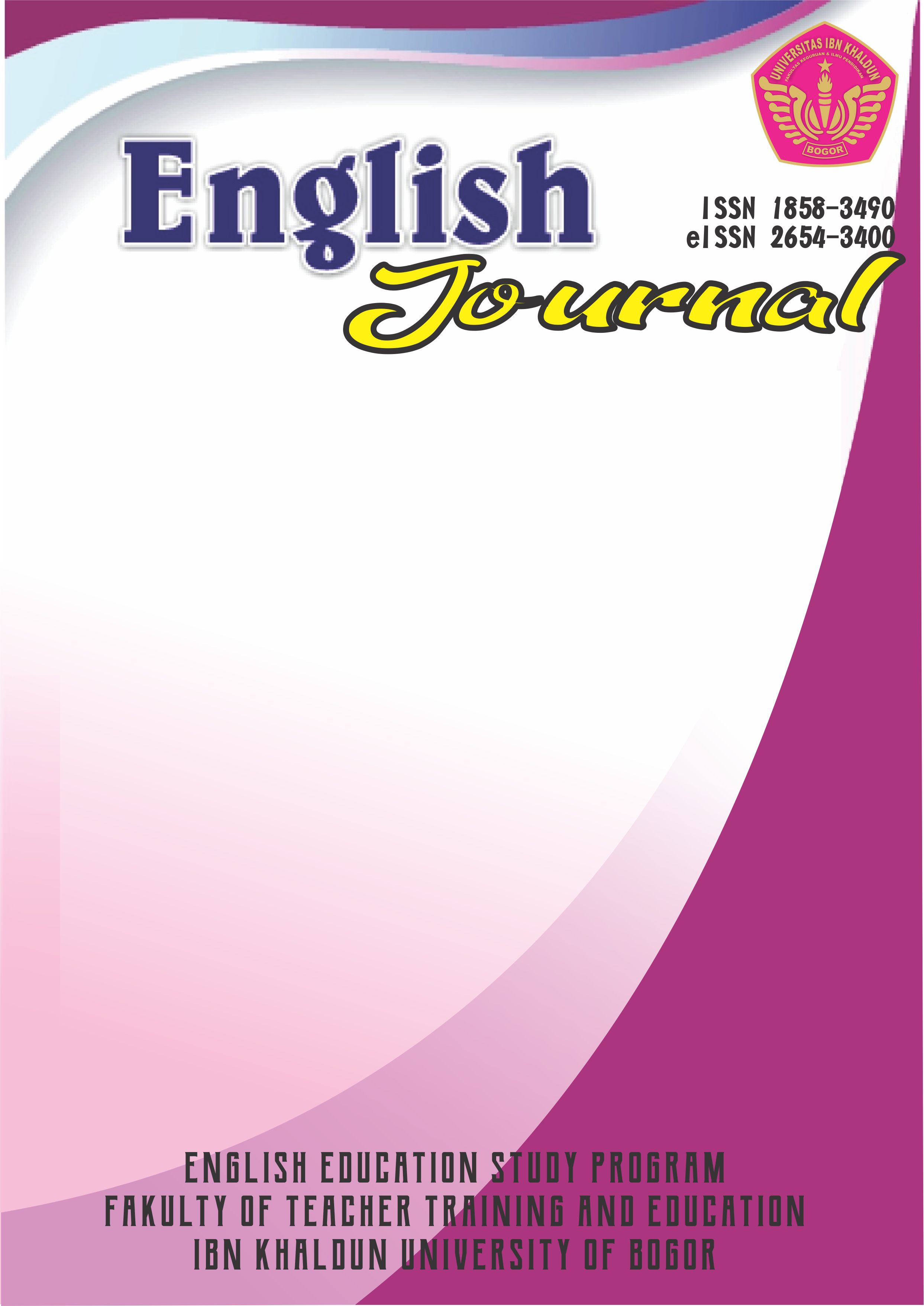PROMOTING STUDENTS' READING COMPREHENSION WITH COOPERATIVE INTEGRATED READING AND COMPOSITION (CIRC)
DOI:
https://doi.org/10.32832/english.v14i1.3841Abstract
Cooperative Integrated Reading and Composition (CIRC) is one of cooperative learning method used in language teaching, specifically in high-level reading and writing. This method is designed to accommodate variety of student ability level with heterogeneous grouping or homogeneous grouping. CIRC aimed to develop students' ability in comprehending the content of reading and fostering the ability to write the materials they read. The purposes of this research were to know how CIRC is implemented in classroom, and to know to what extent CIRC promote students' reading comprehension. The researcher used classroom action research in conducting the research. The qualitative data was obtained from observation, interview, and documentation. The participants of the research were the 10th grade students of one senior high school in Bogor. The result of the research shows that CIRC can be implemented in two cycles and four meetings. The data shows that there are some competencies which indicates that CIRC promote students' reading comprehension in cognitive activity, motivation activity, and affective activity. This study suggests the good atmosphere and used another text to be implemented in other classes using CIRC.References
Clearinghouse, W. W. (2012). Cooperative Integrated Reading and Composition. Institute of Education Science, 1 - 19.
KasiM & Raisha, S. (2017). EFL Students' Reading Comprehension Problems: Linguistic and Non-Linguistic Complexities. English Education Journal (EEJ), 308 - 321.
Kautsar, A. A. (2017). Penerapan Model Cooperative Integrated Reading And Composition Untuk Meningkatkan Kemampuan Membaca Pada Tema Peristiwa Dalam Kehidupan Siswa Kelas V MIN 40 Aceh Besar. 43.
Kemmis, S., McTaggart, R., & Nixon, R. (2014). The action research planner: Doing critical participatory action research. Singapore: Springer.
Mubarok, H., & Sofiana, N. (2017). Cooperative Integrated Reading and Composition (CIRC) and Reading Motivation: Examining The Effect on Students' Reading Ability. Lingua Cultura, 121-126.
Nurvasari, D. A. (2017). The Use of Cooperative Integrated Reading and Composition (CIRC) Technique to Improve Students' Reading Comprehension At The Eight Grade Students of SMP Al Islam Kartasura in the Academic Year of 2015/2016. Surakarta: State Islamic Institute of Surakarta.
Rani, A. (2018). "The Influence of Using Think-Talk-Write (TTW) Strategy Towards Students' Announcement Text Writing Ability at the Second Semester of Eighth Grade of MTs Darul Ulum Baturaja in Academic Year 2017/2018”.
Qarqez, M., & Ab Rashid, R. (2017). Reading Comprehension Difficulties among EFL Learners: The Case of First and Second Year Students at Yarmouk University in Jordan. Arab World English Journal (AWEJ), 421 – 431.
Slavin, R. E. (2005). Cooperative Learning : Teori, Riset dan Praktik. Bandung: Penerbit Nusa Media.
Tobergte, D., & Curtis, S. (2013). Cooperative Learning : Theory & Practice. Journal of Chemical Information and Modeling, 1689-1699.
Torgesen, J. K. (2000). Individual Differences in Response to Early Interventions in Reading: The Lingering Problem of Treatment Resisters. Learning Disabilities Research and Practic, 55-64.

















1.png)




